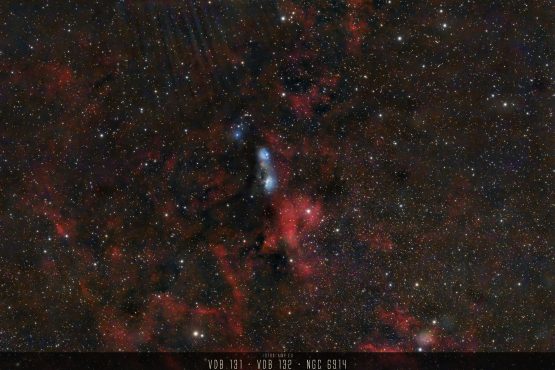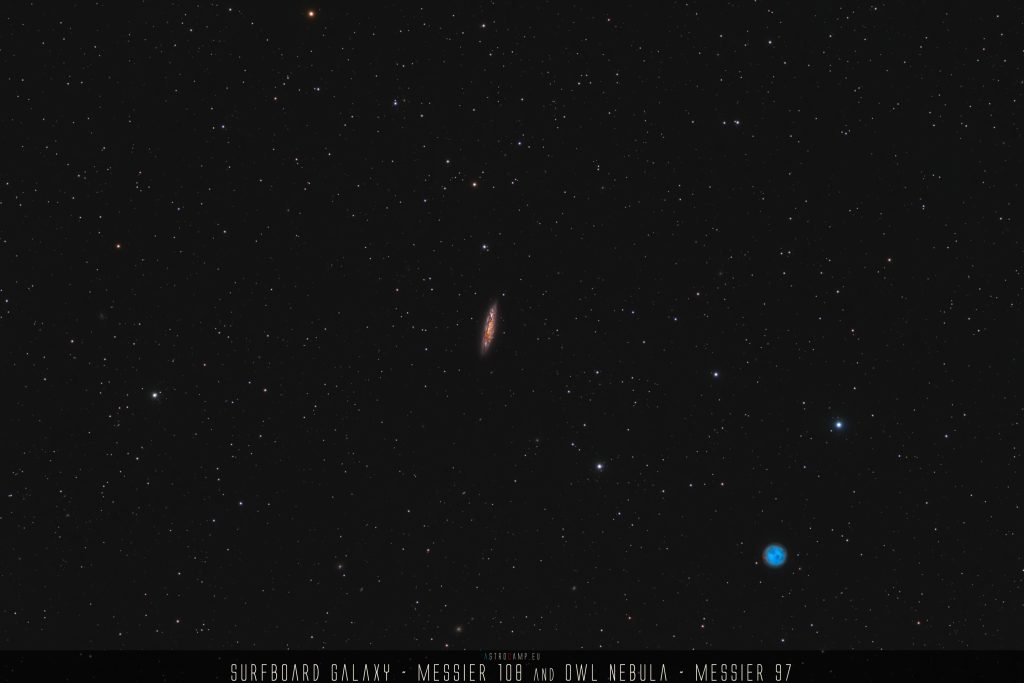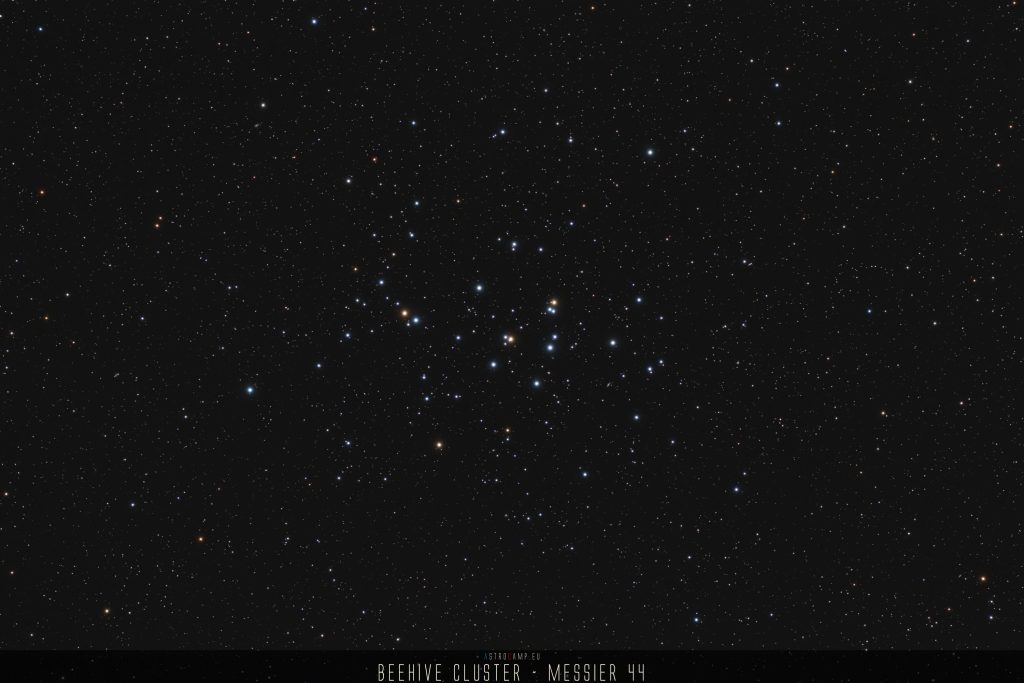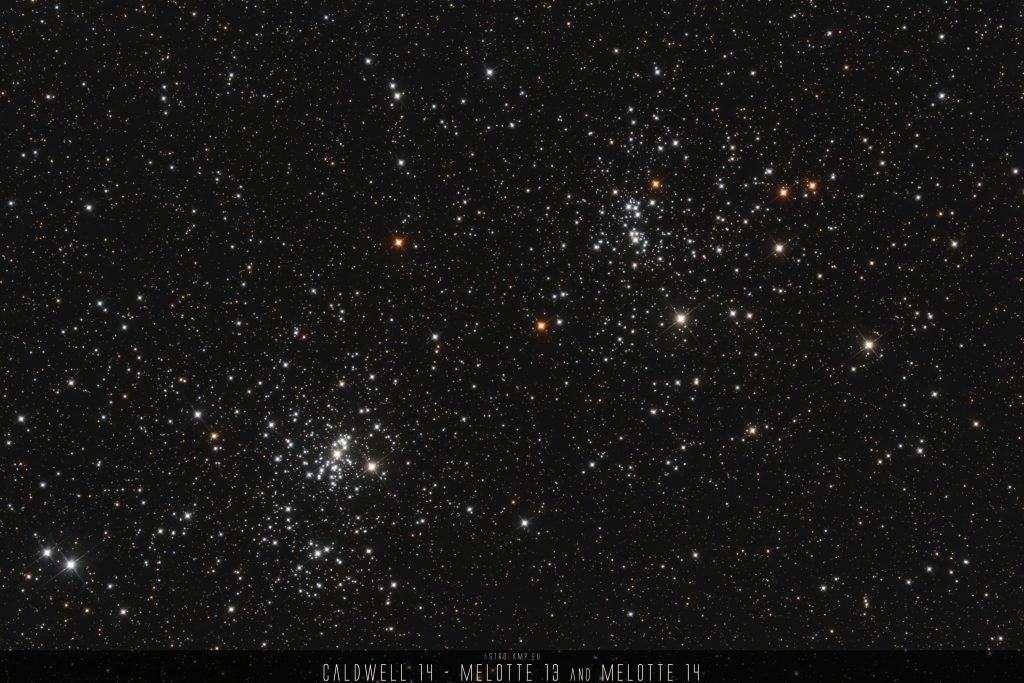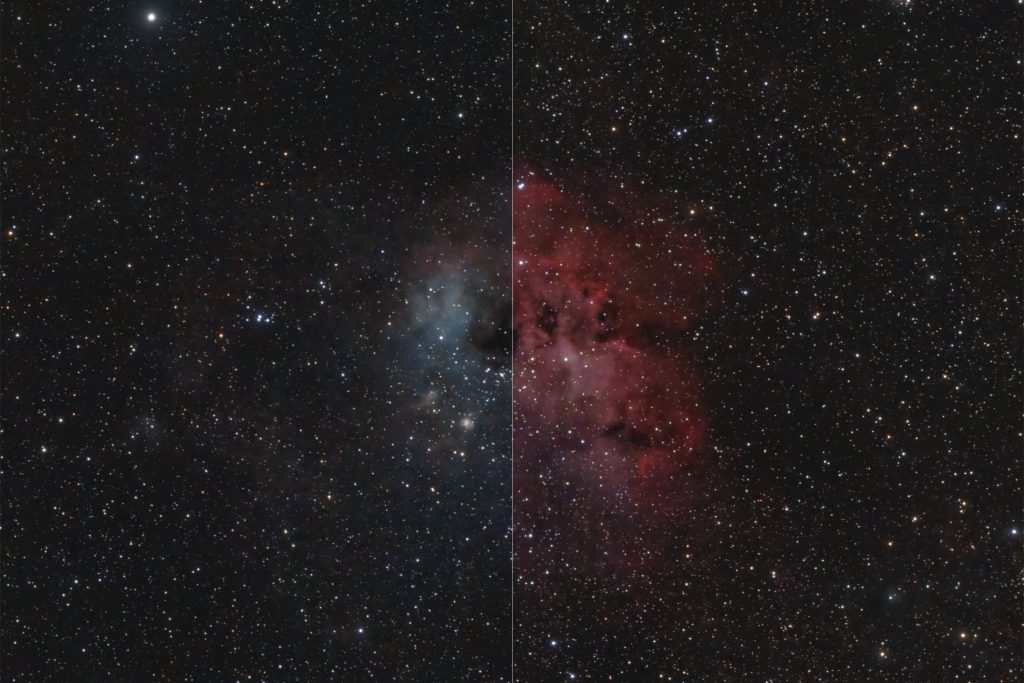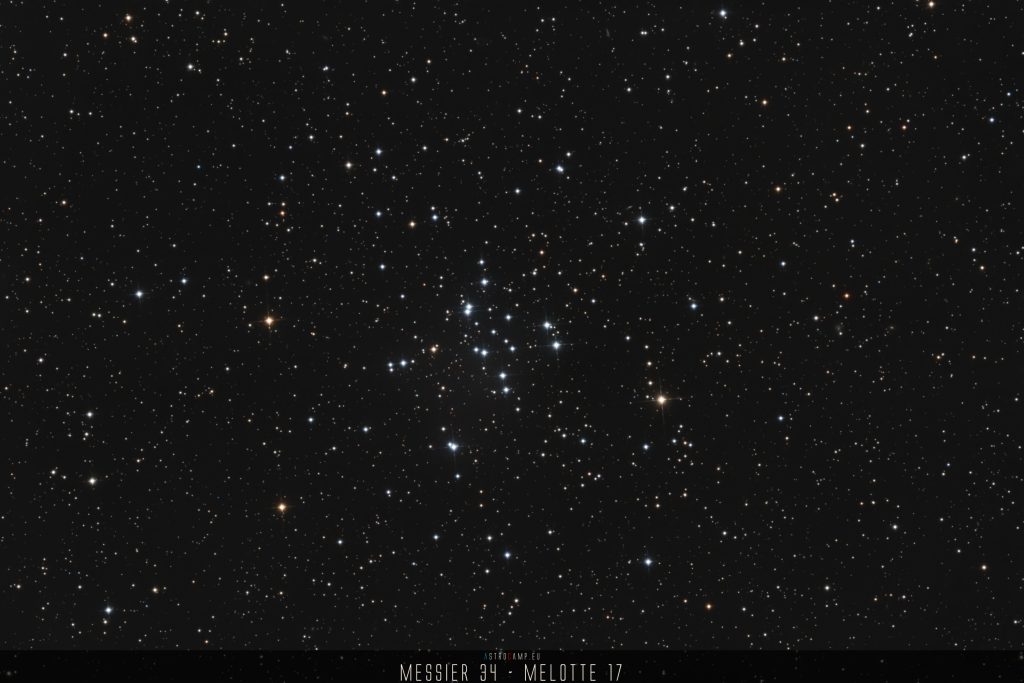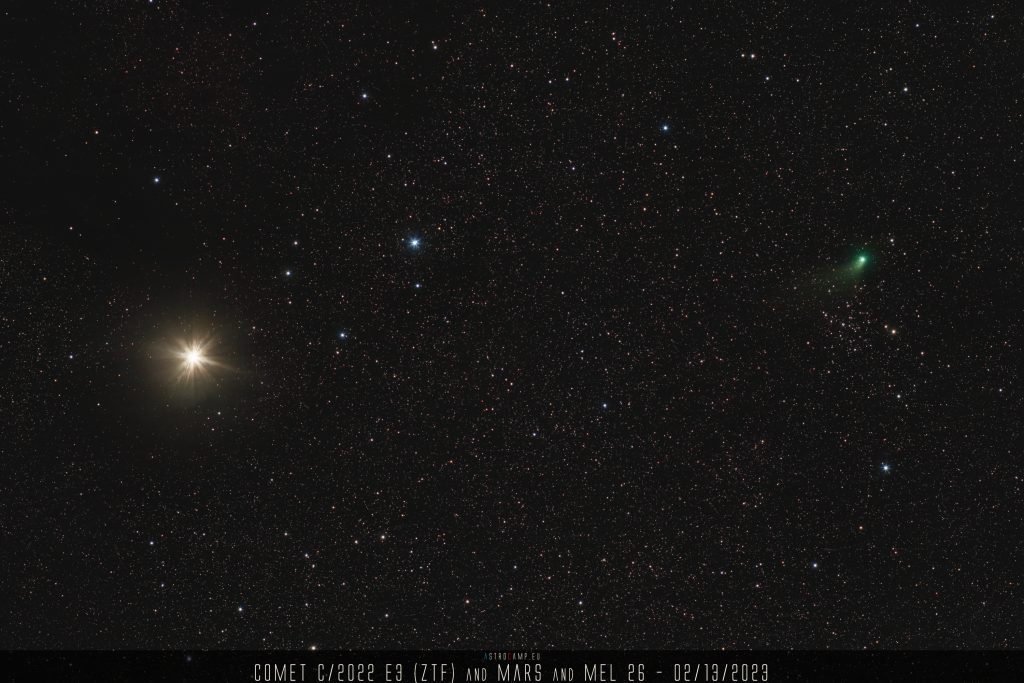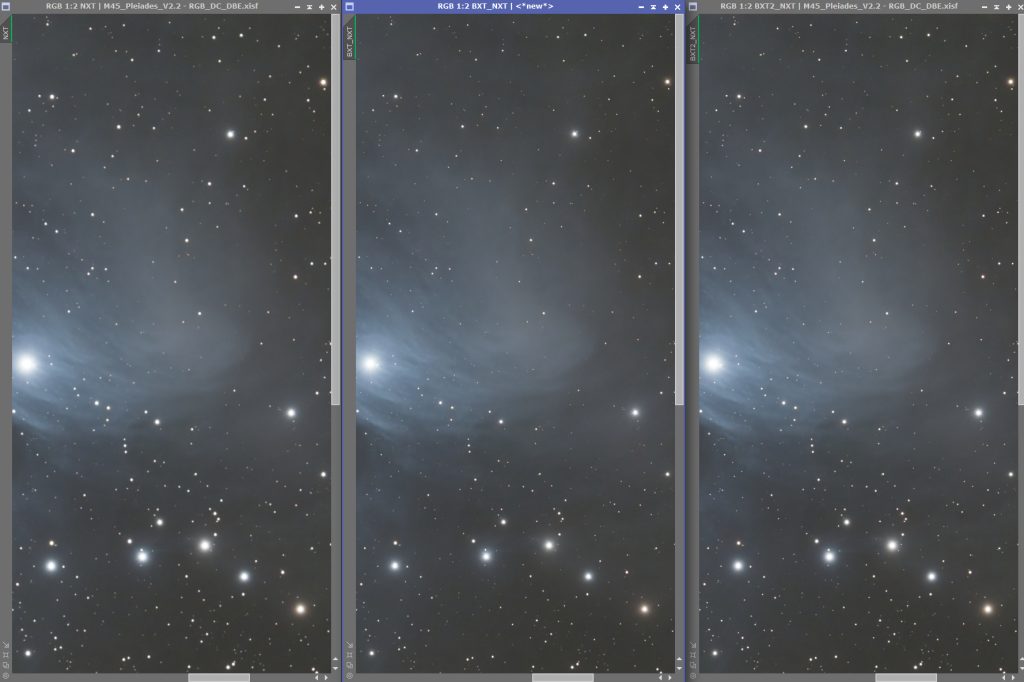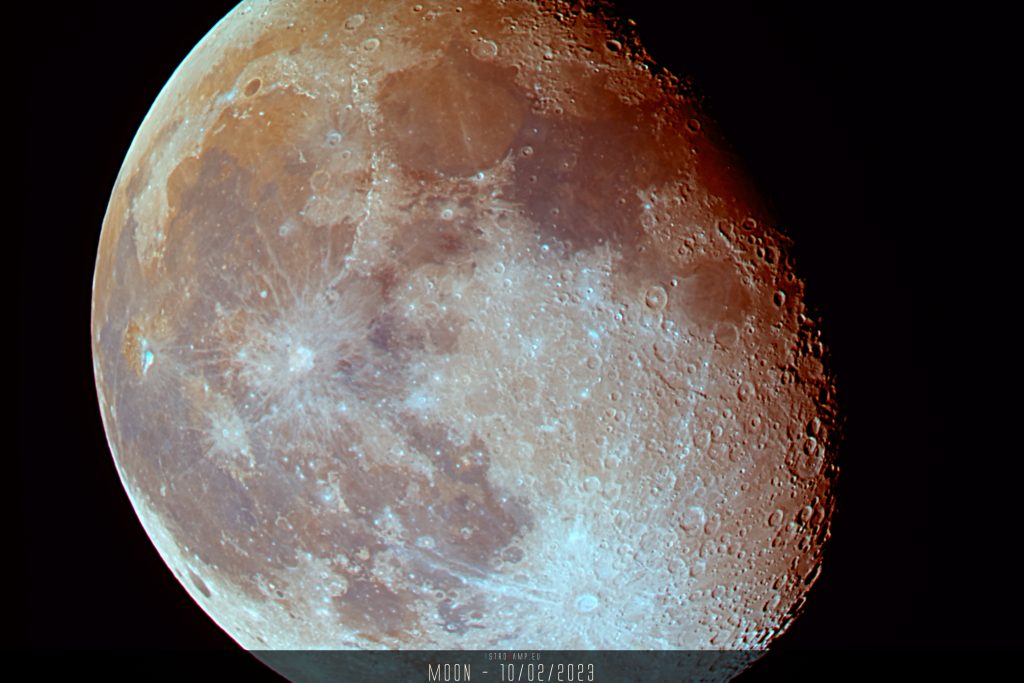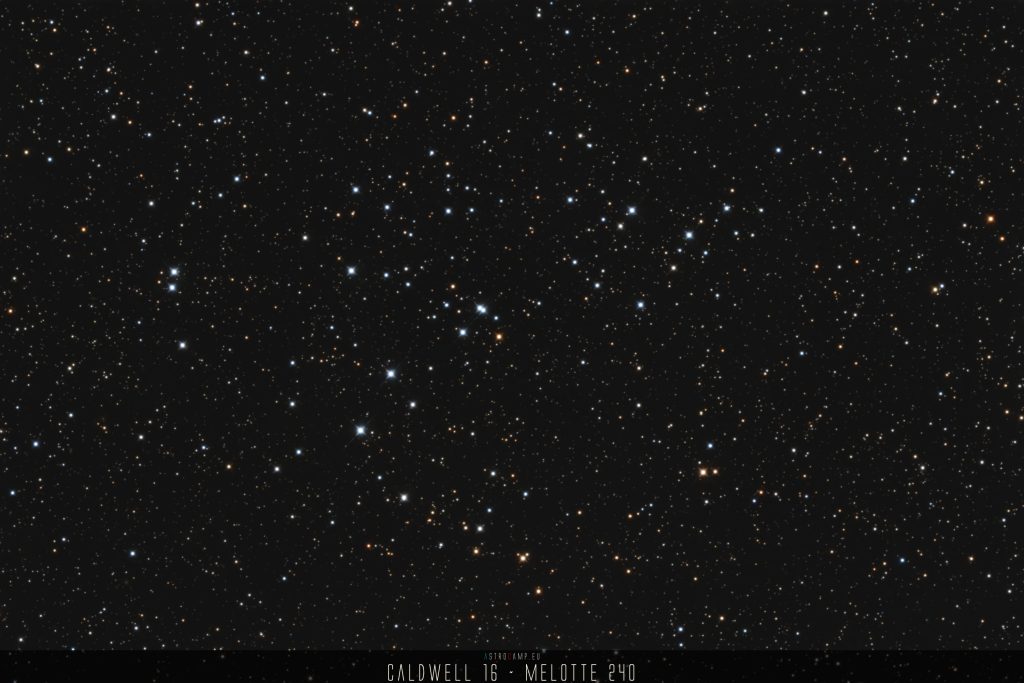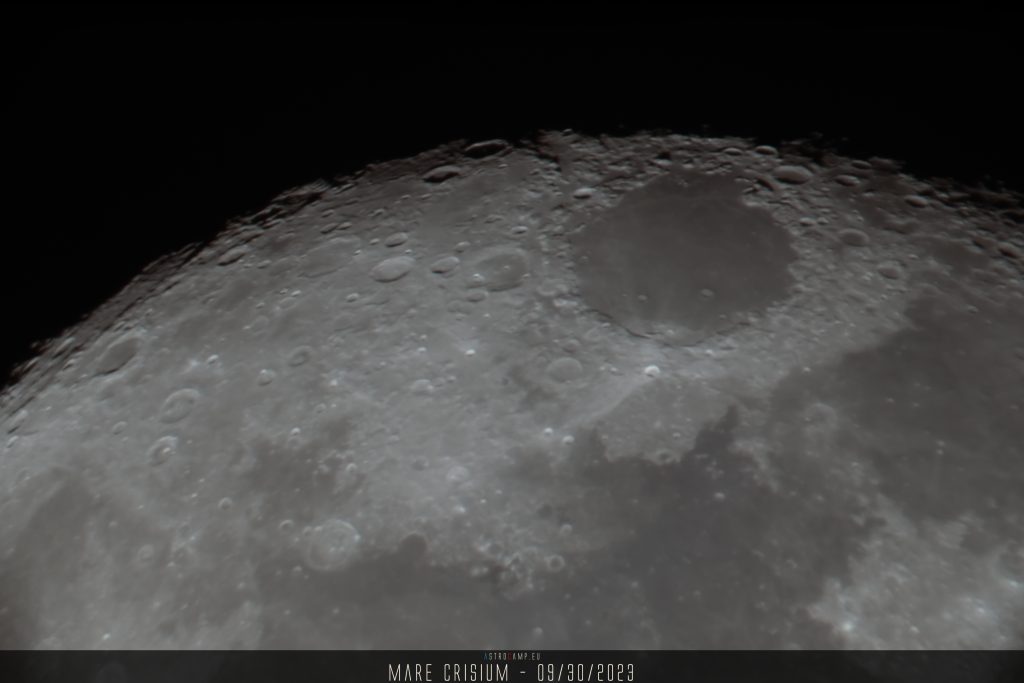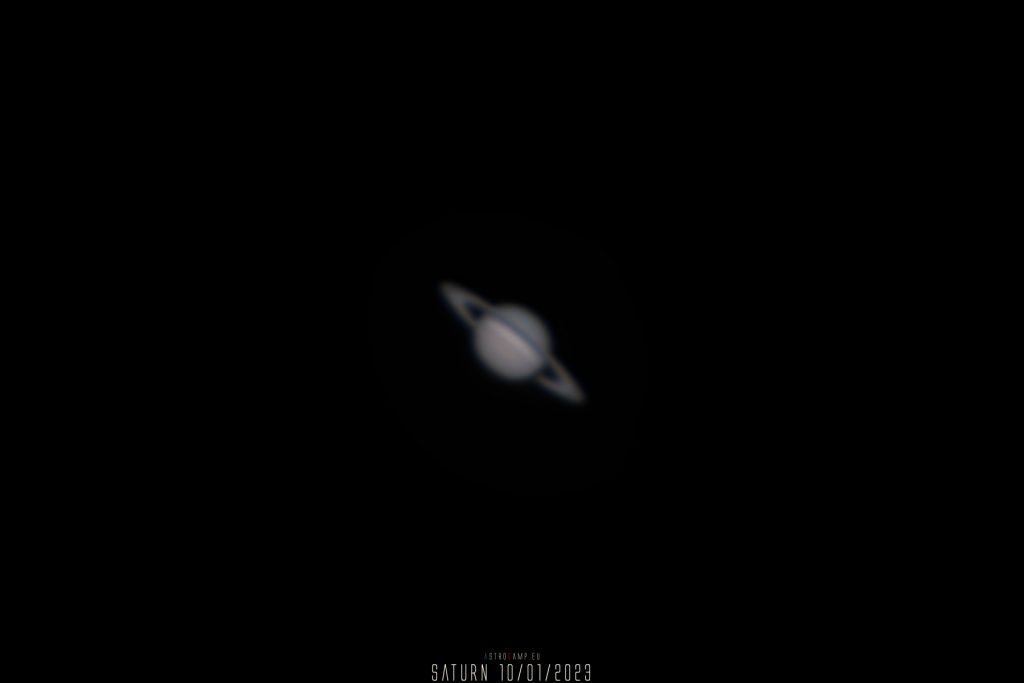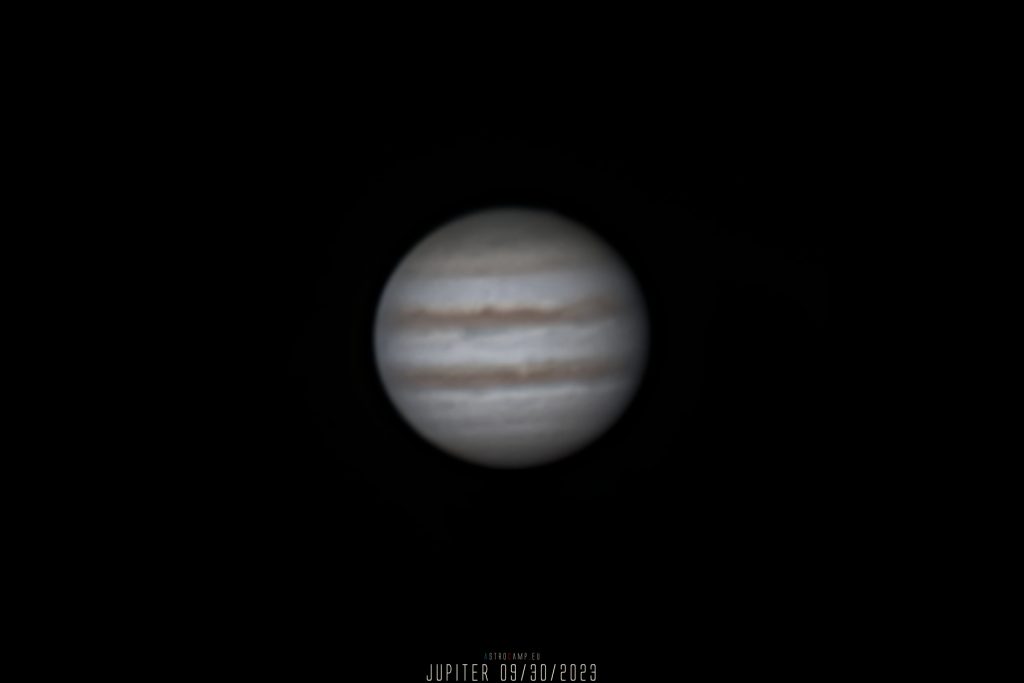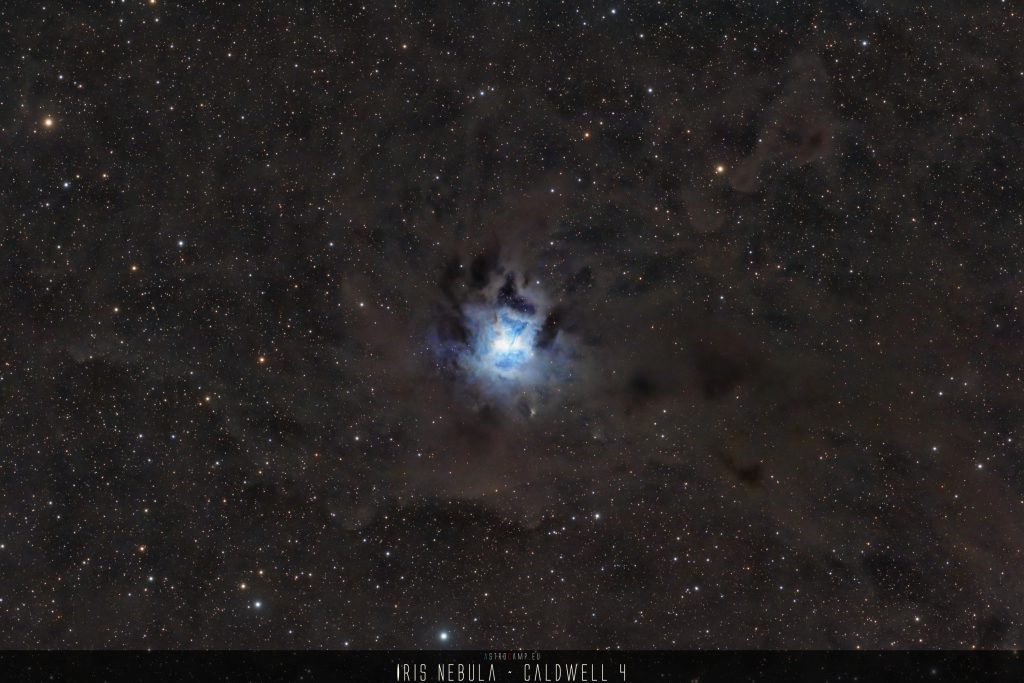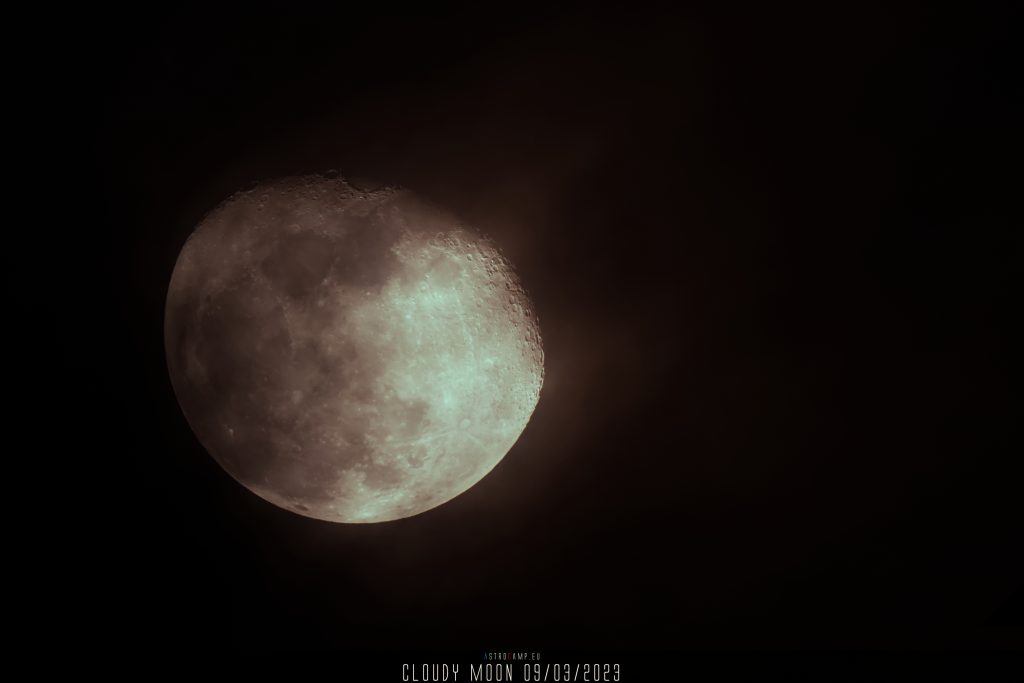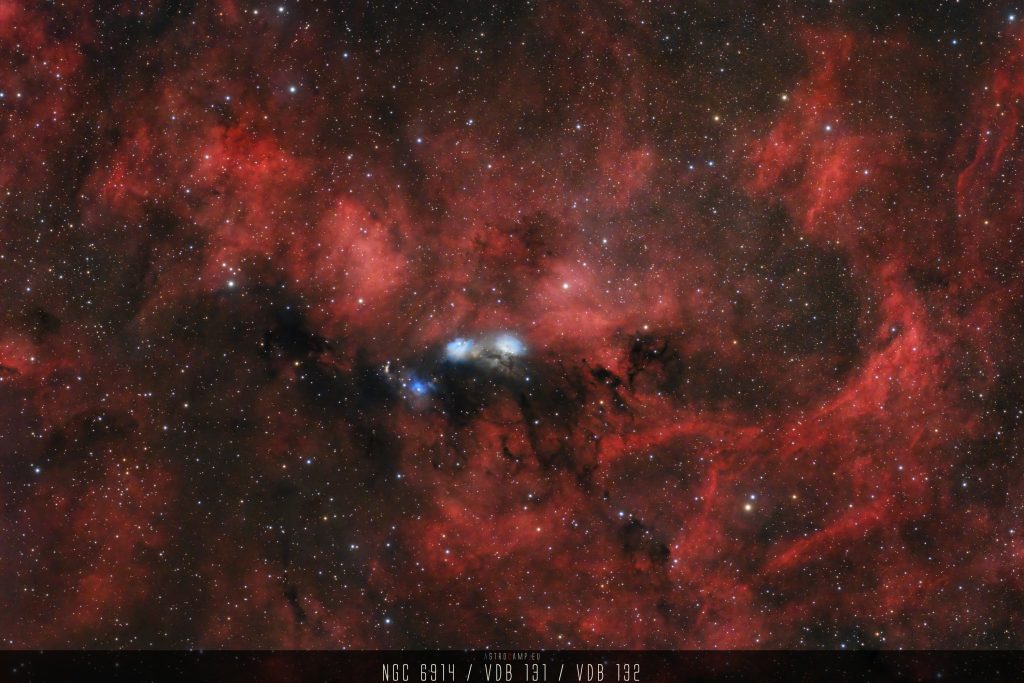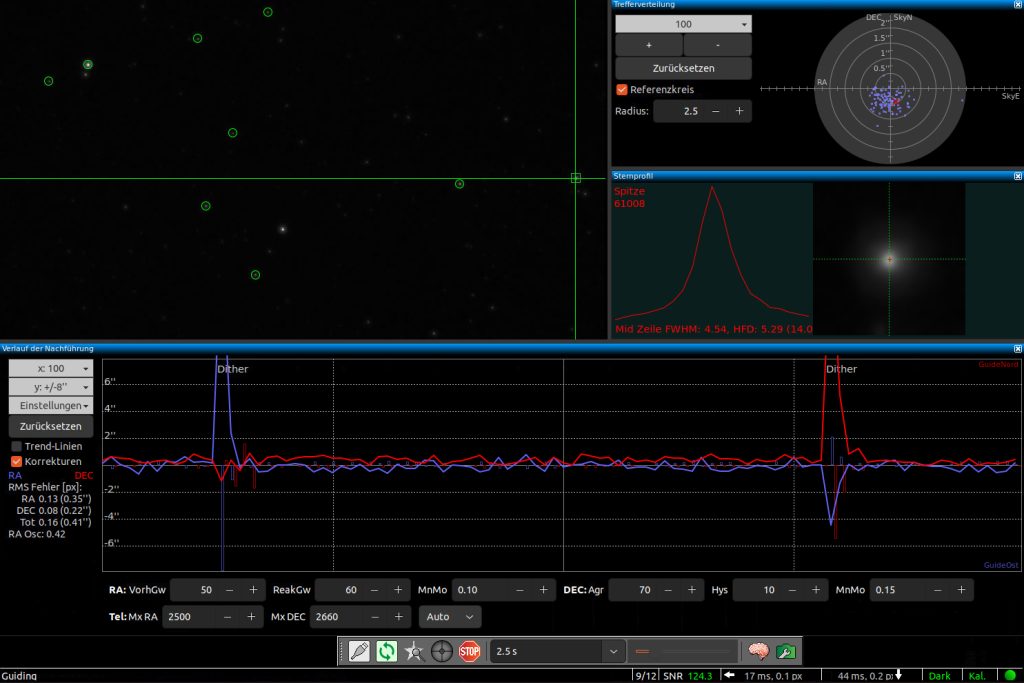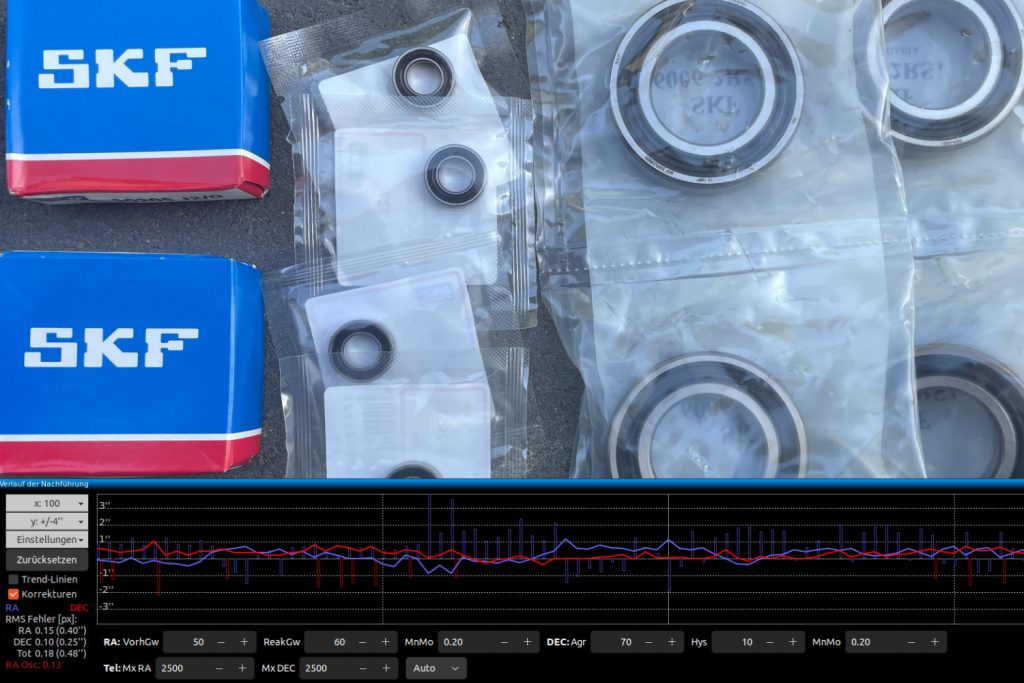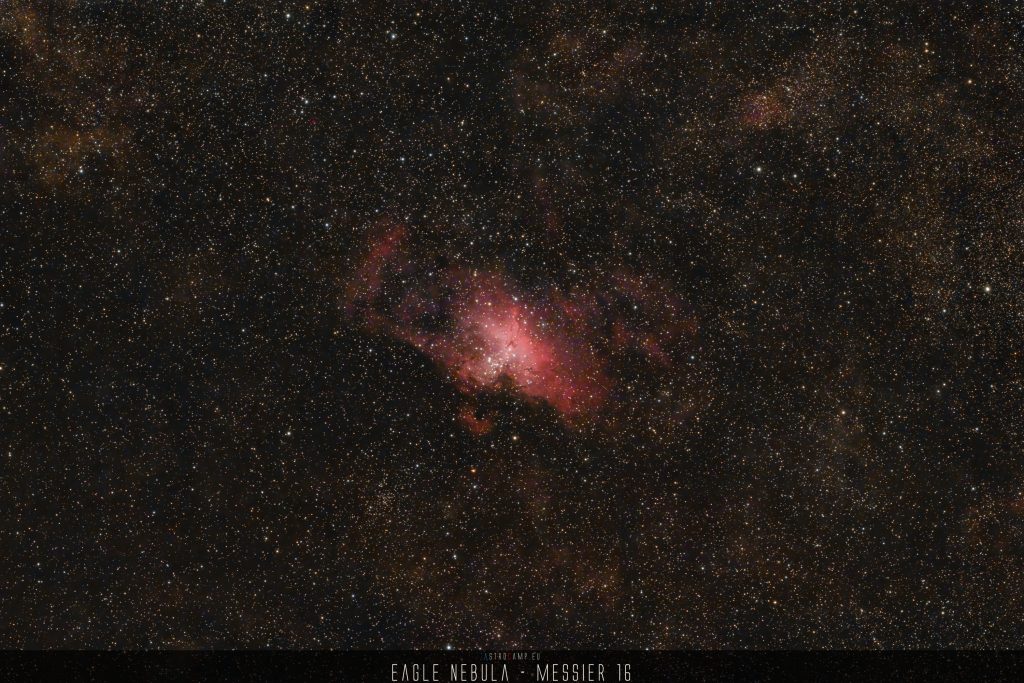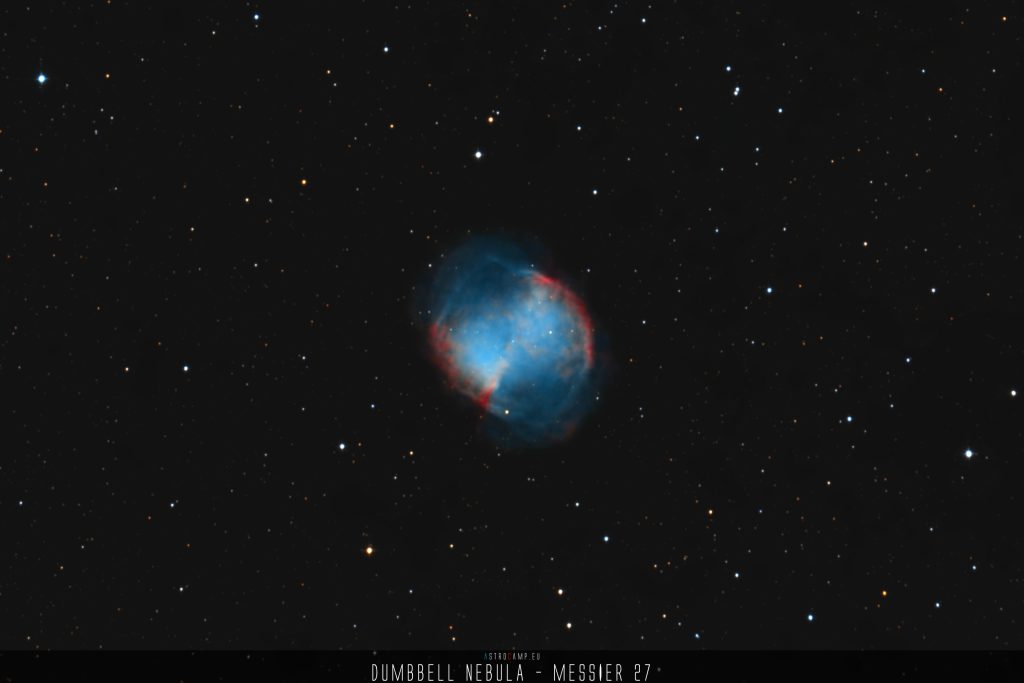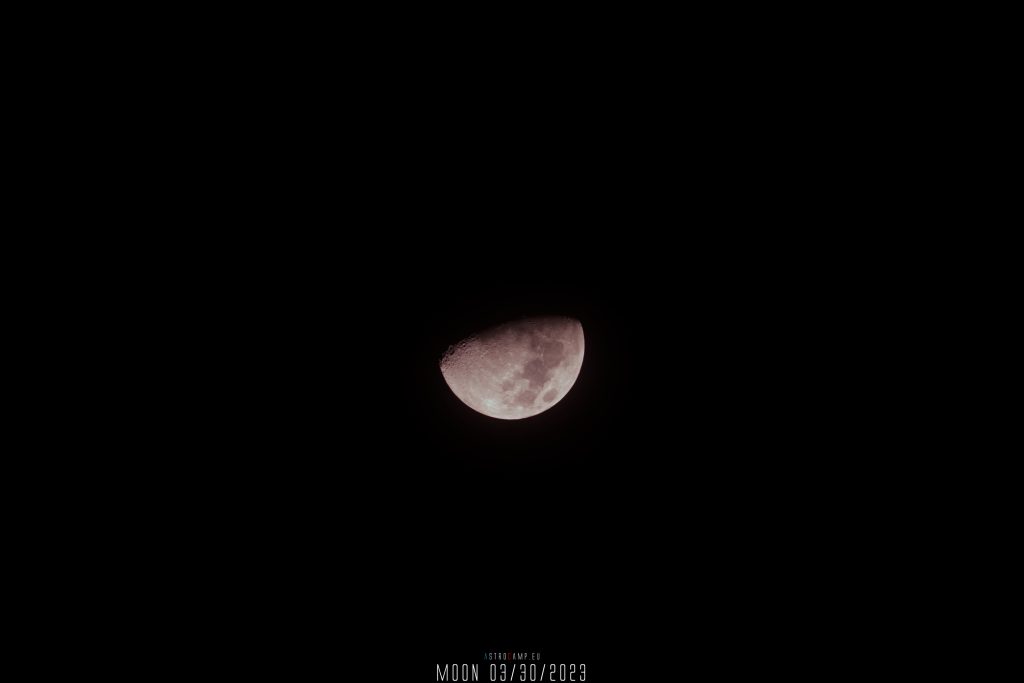Position of NGC 6914
The distance to NGC 6914 is not precisely known and there are no definitive measurements. However, there are estimates that it is located at a distance of about 6,000 to 7,000 light-years from Earth based on the distance of other stars in the region. These estimates are subject to some uncertainties and can vary depending on the method used.
Additionally, the nebula is located in the Cygnus region of the Milky Way, which is known for its rich and diverse population of stars and nebulae.
Some unique facts about NGC 6914
NGC 6914 is a unique nebula complex because it contains both emission and reflection components, making it a beautiful and fascinating object for astronomers to study. The ionizing radiation from the hot, young stars in the region causes the gas in the nebula to glow, while the dust in the region scatters the light from these stars and appears as a blue reflection nebula. This combination of emission and reflection nebulae creates a stunning interplay of light and color that is a unique feature of NGC 6914.

Brightness of NGC 6914
The brightness of NGC 6914 is difficult to determine as it is a nebula complex composed of different emission and reflection nebulae. Overall, the nebula is quite faint and only visible with telescopes or specialized astrophotography techniques. The brightness also varies depending on which wavelength of light is measured. For example, the emission nebula in NGC 6914 is relatively faint in the visible range of the spectrum (i.e., wavelengths that the human eye can see), while it appears much brighter in the infrared range.



